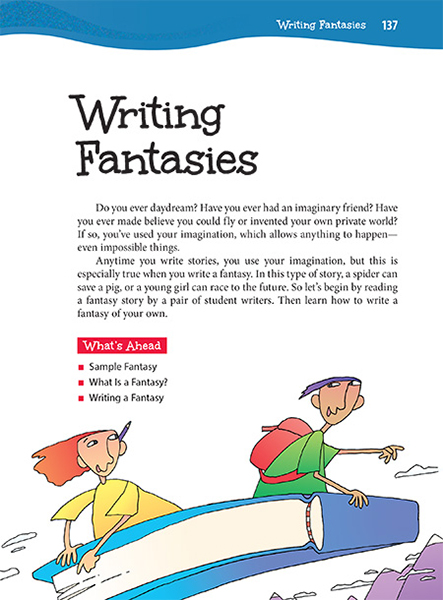Page 137 from

Start-Up Activity
On their own or in pairs, have your students list some of their favorite stories and books. Then as a class, discuss elements of fantasies—especially that the impossible is accepted as real. Decide whether some of your students' favorite stories are fantasies.
Think About It
“ ‘The cat sat on the mat’ is not the beginning of a story. ‘The cat sat on the dog’s mat’ is.”
—John Le Carre

Start-Up Activity
On their own or in pairs, have your students list some of their favorite stories and books. Then as a class, discuss elements of fantasies—especially that the impossible is accepted as real. Decide whether some of your students' favorite stories are fantasies.
Think About It
“ ‘The cat sat on the mat’ is not the beginning of a story. ‘The cat sat on the dog’s mat’ is.”
—John Le Carre